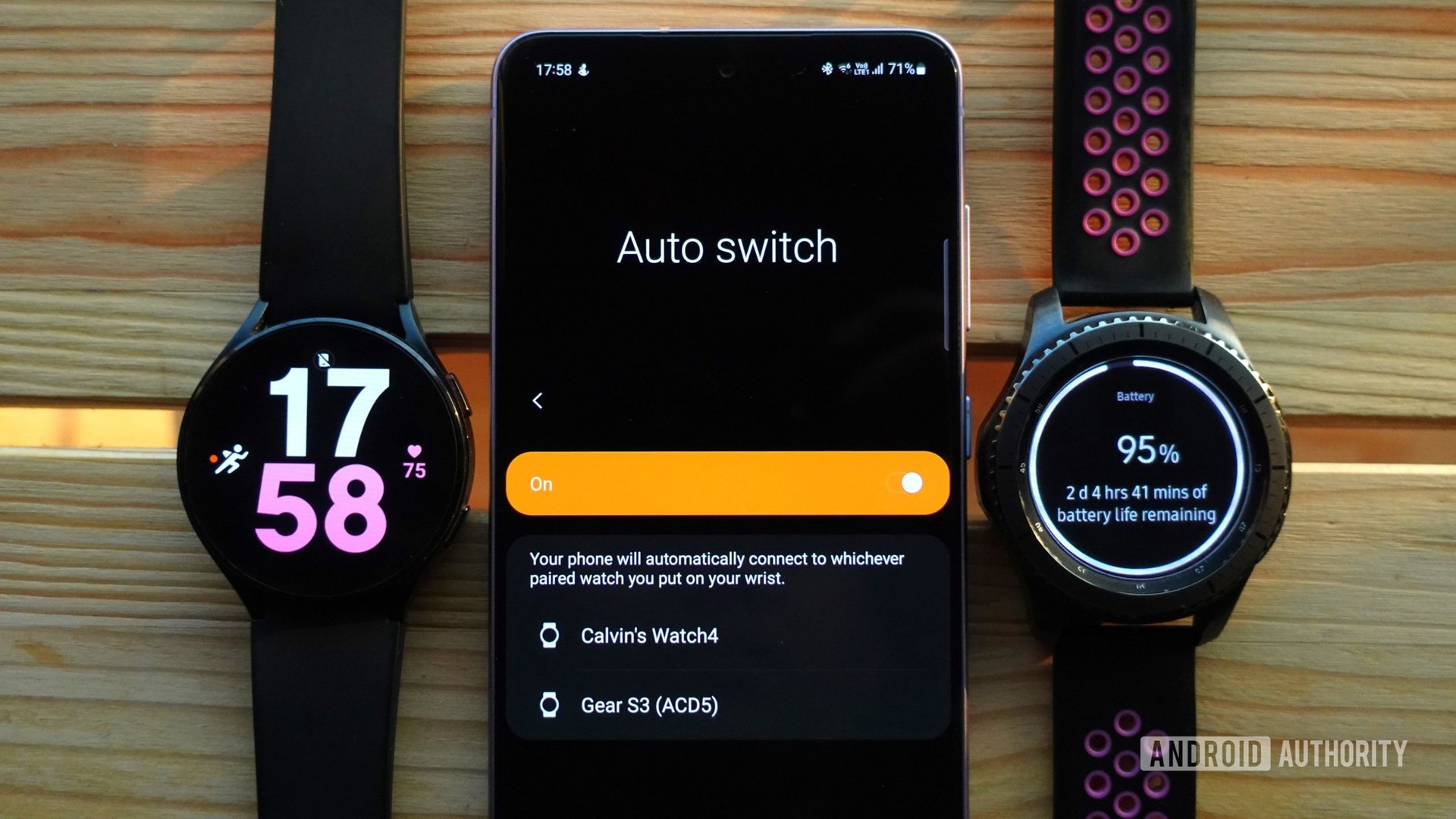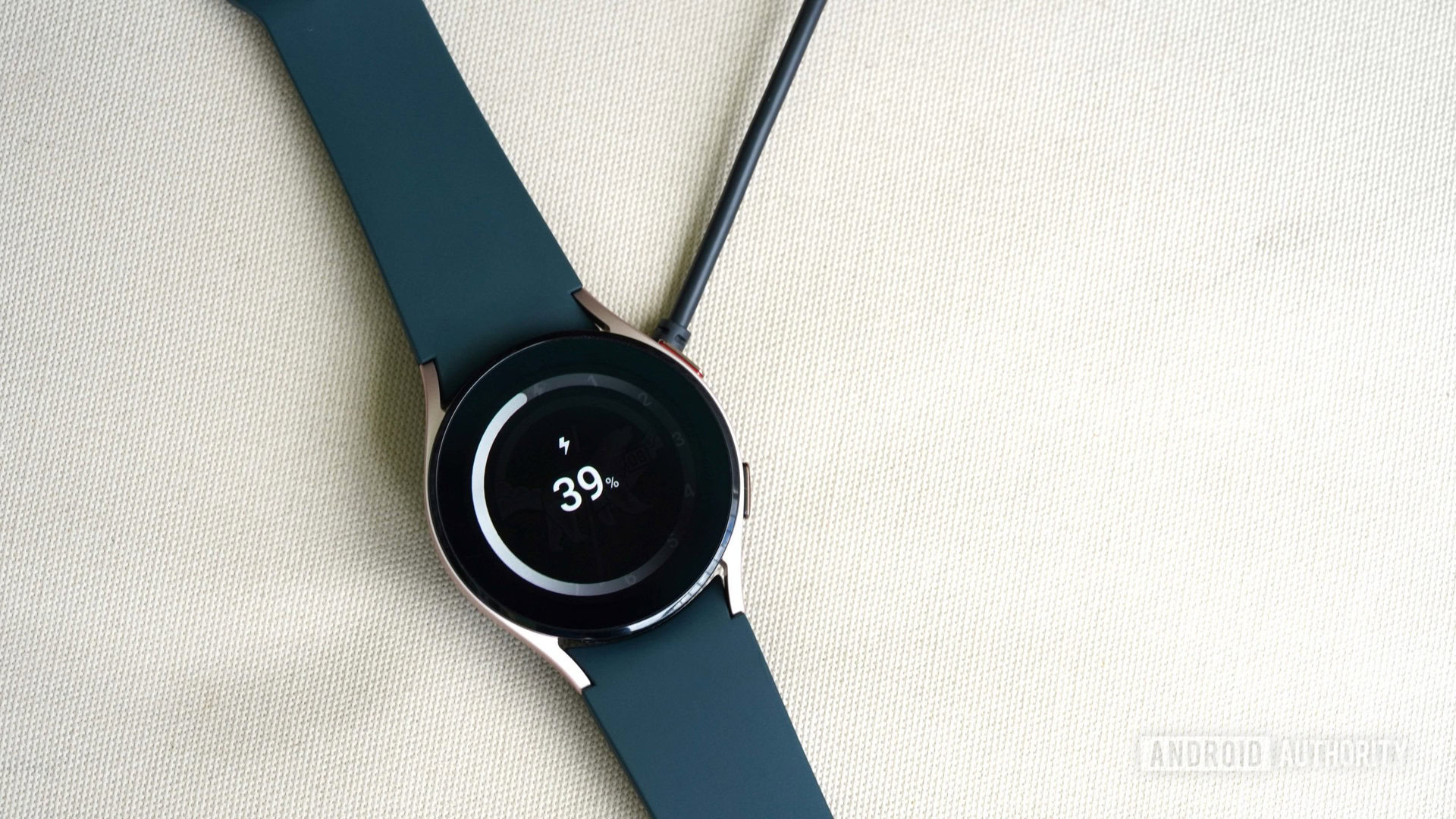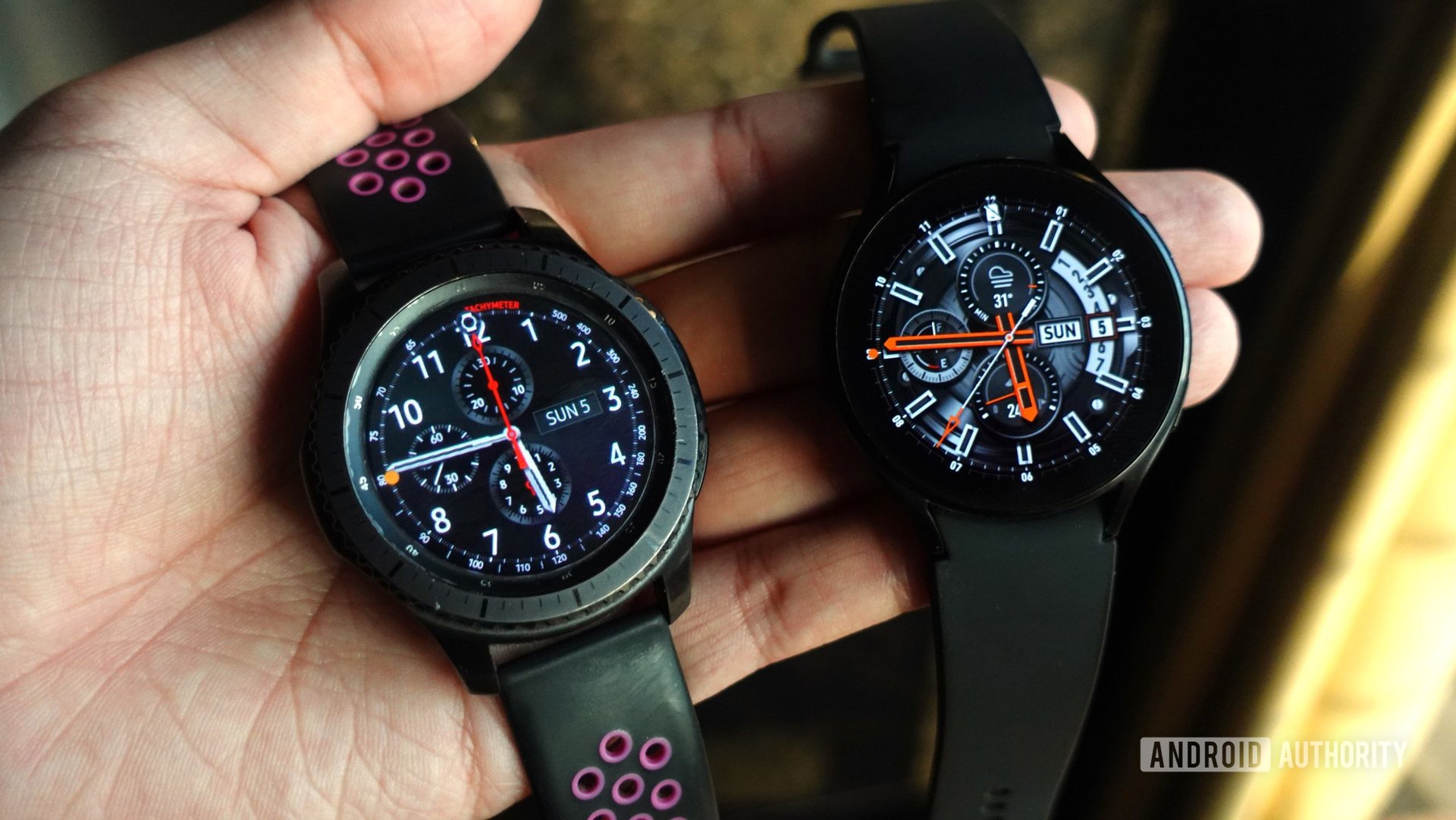Affiliate links on Android Authority may earn us a commission. Learn more.
Not trading in my old Samsung smartwatch solved my battery anxiety problem

After using Samsung’s Gear S3 smartwatch for nearly six consecutive years, I finally moved to the Galaxy Watch 4 sometime last year. From performance to app support, it was a big upgrade in every way — thanks largely to Samsung adopting Wear OS 3. But only a few days in, I found myself regretting my decision. I couldn’t shake the feeling that my six-year-old Gear S3 delivered significantly better battery life than the Galaxy Watch 4.
If you take Samsung’s claims at face value, the Watch 4 should last 40 hours on a single charge. But I struggled to achieve that in real-world use. Sure, I could go through all the Galaxy Watch 4 battery problems’ recommended fixes and disable the always-on display, automatic workout detection, continuous heart rate monitoring, sleep tracking, and even the Google Assistant. All of that might get me closer to two days between charges. But at that point — is it even worth owning a smartwatch?
I personally refuse to disable the always-on display — telling the time is one of the core jobs of any wristwatch, and I won’t sacrifice glanceability for better battery life. However, the obvious downside is that I have to reach for the charger every single day. That’s more than a minor inconvenience considering that the Galaxy Watch 4 takes around 2 hours to fully charge — longer than it takes me (and most people) to start their day.
Short battery life and long charging times meant I couldn't use my smartwatch for sleep tracking.
On more than one occasion, I had to leave home with the watch still charging on my nightstand. Eventually, I gave up trying to use the Galaxy Watch 4 for sleep tracking. I’d set it down before bed and let it charge back up for the next day. But I’m glad to report that I’ve finally found a first-world workaround for this decidedly first-world problem. I’ll admit that it’s not for everyone, but it works so well, I’d encourage at least trying it out: just use two smartwatches.
Samsung Auto switch: No more smartwatch battery anxiety

A few days ago, I came across my old smartwatch — the Gear S3 — while rummaging through a drawer. I charged it and booted it up, fully intending to sell it, only to find that I hadn’t reset it yet. And much to my surprise, it automatically connected to my phone when I put it on my wrist. I also noticed the “Connection lost” indicator show up on my Galaxy Watch 4 at the same time.
Digging into the Galaxy Wearable app, I found out that the app can stay paired with multiple smartwatches at once. Sure, that’s nothing special. But here’s the big deal — Samsung has a hidden feature that uses skin detection to know which watch you’re wearing at any given point. That explains why my Gear S3 took precedence when I wore it; with “Auto switch” enabled, the app automatically connected to the watch on my wrist and disconnected from the other one.
Samsung's hidden, but clever, Auto switch feature has eliminated smartwatch battery anxiety for me.
If you’ve ever paired multiple wearables to a single phone, you’ll know why this is such a big deal. Typically, your phone will maintain a persistent Bluetooth connection and push notifications to any and every paired smartwatch in the vicinity. I was never pleased with this behavior because of the potential battery drain, so I would immediately unpair the extra device. Even if I didn’t, Bluetooth audio quality would nosedive under the load of three or more simultaneous connections.
Seeing how well Samsung’s auto-switching feature worked, another thought crossed my mind — I could keep one watch on the charger and essentially never have to worry about battery life. And that’s exactly what I’ve been doing for the past couple of weeks.
Before leaving the house, I now check the battery percentage on the Galaxy Watch 4. If it’s too low, say below 40%, I’ll swap it for the fully charged Gear S3 on the way out. With Samsung’s auto switch feature enabled, I don’t have to worry about squeezing smartwatch charging into my daily routine. One of the two watches is always charged, no matter what. And when I need to swap between them, I don’t have to fiddle with Bluetooth settings and manually disconnect or reconnect.
I now turn on all of the battery-draining features I’d never dared to earlier. Always-on display, raise to wake, GPS tracking, SpO2 monitoring while sleeping — the whole nine yards.
To enable Auto switch, open the Galaxy Wearable app, tap the menu in the upper left corner, then choose Auto switch. Toggle it on.
The phone will now automatically connect to the wearable that’s on your wrist. You’ll get all your notifications on it and it will log all of your activity.
Seven years old, but still ticking

Battery life argument aside, I was afraid that I’d hate going back in time to an older smartwatch. Luckily, there was no major re-adjustment involved — at least not in the way you’d scoff at using a seven-year-old smartphone. The Gear S3 might lack Google Maps and other creature comforts, but it’s still great at activity tracking, contactless payments, and replying to notifications.
Samsung has also done a commendable job of keeping its Tizen-based ecosystem alive, so I faced no problems with auto sync either. My Samsung Health data from one watch automatically shows up on the other watch, even though they run entirely different operating systems. And as I’d suspected, the Gear S3’s battery life is still really good in 2023. All in all, not bad for a seven-year-old platform.
Samsung's older wearables hold up shockingly well, even half a decade later.
Now, I know what you’re probably thinking — the latest Galaxy Watch 5 has a slightly larger battery and faster charging. Why not upgrade instead of juggling between two smartwatches? Well, I don’t think those improvements will be enough to match my current experience. I expect the battery anxiety to still exist, only stretched out to a longer time frame. And the last thing I want to do is buy yet another brand-new smartwatch.
Is this dual-watch solution for everyone? Like I said earlier, maybe not. If you’re new to Galaxy smartwatches, you’d have to buy two of them to take advantage of the auto-switch feature. But if you’re upgrading within the Samsung ecosystem, I’d recommend holding on to your old wearable and not trading it in.
The auto-switch functionality also works with less sophisticated Samsung wearables like the Galaxy Fit 2 ($76.50) — you could grab one for sleep tracking while your main smartwatch charges at night. And if you don’t mind the splurge, you could always pick up a used Tizen-based Galaxy Watch 3 for less than $60 on eBay. If wearable battery life bothers you, I can promise that the peace of mind is well worth it.